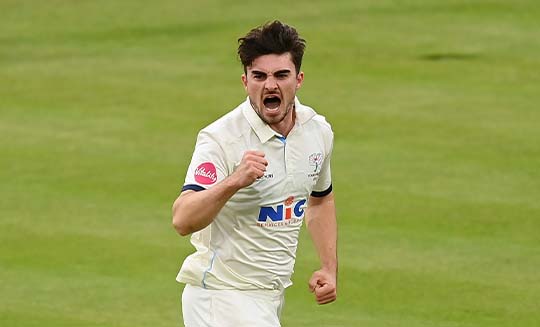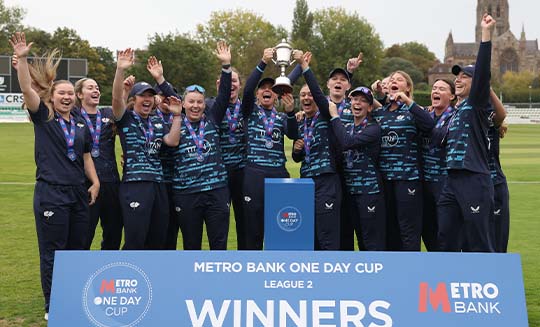PCA PRESS RELEASE
The Epidemic of Player Non-Payment in Global Cricket by WCA CEO Tom Moffatt.
To see more articles. Click here
As cricket enters a new era with growing global appeal and revenues, many professional players in sanctioned leagues and pinnacle events are still waiting to be paid what they’re owed. Tom Moffat of the World Cricketers’ Association highlights how far behind cricket is in providing basic protections for the players who put on the show in an exclusive guest column for cricexec.
A major part of WCA‘s job in representing players collectively at global level across 15 of the top 18 cricket countries, is to support and advocate for players on issues raised with us by our members associations and affiliated players. One of the most consistent issues we deal with globally is the late payment or non payment of players. In our last global player survey completed by more than 320 current pro players globally (majority internationals), 29% said they have experienced late or non-payment in cricket that is sanctioned by the ICC or its members.
ICC event prize money
We recently assisted the Oman men’s players who came to us for support after not receiving the prize money they are entitled to relating to the T20 World Cup held in 2024. The saga has dragged on for almost a year, the players lost their contracts for raising non-payment issues, and have still not been paid. Whilst the treatment of those players was extreme and we are confident the public will see that situation and the response to it for what it is, the Oman players are not alone and players have faced similar non payment issues in Bangladesh, Pakistan, Uganda, Sri Lanka, Afghanistan, Nepal, PNG, and India. Some of this money is still outstanding.
This stands in contrast to the documentation that underpins pinnacle ICC Events, including:
- WCA’s agreement with ICC ensuring a percentage of ICC revenue is paid to players as prize money and commercial (e.g. image) rights payments
- The ICC’s own terms of participation which require the money to be paid to the players via the national governing bodies within 21 days of the completion of each event
It also stands in contrast to the media releases that come out before each event:
ICC Chief Executive Geoff Allardice remarked on the event’s historic significance, “This event is historic in so many ways, so it is fitting that the prize money for players reflects that. Hundreds of millions of fans around the world will be entertained by the players in what we’re hoping to be an Out of This World event.”
The public would be forgiven for thinking that the prize money that is announced before each event was actually going to end up with the players who it’s designed to go to, and who put on the show. Especially given it accounts for such a small percentage of ICC revenue, and the remaining 97% of ICC revenue is used to run the ICC, or goes to the national governing bodies, unencumbered, for them to do whatever they want with, at least in the full member countries. If players have collective representation by a players’ association in their own country, they might get a fair share of the remainder. We know that many don’t.
Domestic leagues
Major offenders on late and non payment in sanctioned domestic leagues have historically included:
- Bangladesh Premier League
- Lanka Premier League
- Abu Dhabi T10 and other T10 leagues
- Various legends leagues
The way this generally plays out is a well trodden path of agents and WCA pushing both league management and team owners to pay, whilst they each duly point the finger at each other for the delay or non payment. The ones who pay the price – and who often walk away with significantly less money than they were entitled to – are the players. Perhaps the leagues are just banking on the fact the players, agents, WCA, will just drop it eventually. We won’t and WCA will continue to shine a light, and assist players, on these and other issues, including through our Leagues Hub.
How does global cricket enable this behaviour in 2025?
Professional cricket is a short term and precarious career path for most players and these issues reflect poorly on how cricket, which continues to position itself as the second biggest sport in the world, treats one of its most important stakeholders. If an event is officially sanctioned by either the ICC or one of its members – and players are in theory prevented from playing in unsanctioned cricket – shouldn’t there at least be some basic protections for players in all sanctioned cricket?
Part of our recent Global Game Structure Report looked at the game’s current regulations and whether they are fit for purpose for modern cricket. We had James Kitching, FIFA’s former head of regulatory, working with us on the project and whilst we don’t need to copy everything from other sports, we can learn from them in areas where they are clearly more advanced and sophisticated than cricket is.
In simple terms, the current system in cricket perpetuates grey area, and a lack of accountability on national governing bodies on issues such as non-payment, whilst also enabling extreme levels of control to be exercised by the same governing bodies in other areas such as the ability to sanction events, and NOC’s (the control over the release of players).
Solutions
Professional cricket is built on contracts, and any well managed sport should be striving for stability – achieved through fair and balanced contracts – and an ability to enforce them efficiently (both for players and their employers). Our report highlights the need to modernise cricket’s global regulations, as part of necessary broader reform to the calendar, to assist with this.
Specifically in relation to non payment issues, these problems can be addressed by a combination of:
- Sporting and economic penalties for governing bodies who have sanctioned leagues that have non payment issues (e.g. the withholding of ICC distributions to offending Boards)
- Standard dispute resolution clauses in contracts feeding through to a fit for purpose and expeditious dispute resolution body, and linked to the penalties above
- Escrow account requirements for sanctioned leagues, where money can be securely and transparently held until it’s due to players
Way forward
The most efficient way to embed each of these things is through collective negotiation and it would be great if some of the good people who are part of the leadership of our sport stood up to help to proactively address these, and other issues, for the betterment of the sport and people within it.
The broader issue of the intimidatory opposition to players advocating for themselves and exercising their right to choose who represents them, is a post for another day, but needless to say, that behaviour is not designed to help the players who make our sport so great, and it’s at odds with international legal norms and expectations in 2025. Since Curt Flood and the MLBPA fought to remove contract clauses in the 1960’s that effectively treated players as property (similar to those that still exist in some cricket contracts and regulations today), more and more athletes in cricket and other sports are working out that the only way to protect themselves is to stick together under a collective representative body.











